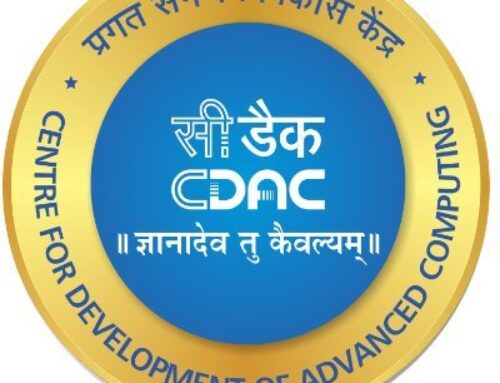India’s journey toward embracing electric vehicles (EVs) is gaining momentum, driven by environmental imperatives and government initiatives. With over 12,000 public charging stations operational across the country, the EV ecosystem has seen remarkable growth in recent years. States like Maharashtra, Delhi, and Karnataka lead the charge with thousands of installed chargers, reflecting a commendable push toward a greener future.
However, beneath this progress lies a pressing challenge: the disparity between the growing number of EVs and the availability of charging infrastructure. Currently, the ratio of EVs to public charging stations in India is approximately 135:1—far behind countries like China and the United States, where this ratio hovers between 15:1 and 20:1. This imbalance not only hampers EV adoption but also fuels the persistent issue of range and charge anxiety among potential buyers.
Despite ambitious government schemes like FAME-II, which has sanctioned nearly 2,900 charging stations in 68 cities, the pace of expansion is struggling to keep up with the demand. The lack of sufficient chargers in urban areas, coupled with an even greater scarcity in rural and semi-urban regions, highlights a critical gap in India’s electrification roadmap.
As India aims for 30% EV penetration by 2030, the importance of robust charging infrastructure cannot be overstated. Addressing this gap is not merely a logistical necessity but a cornerstone of fostering confidence in EV adoption. Without accessible and reliable charging options, the vision of a sustainable, electric future risks being delayed.
Problem: Insufficient Charging Infrastructure Capacity
India’s EV ecosystem is expanding rapidly, but the charging infrastructure has not kept pace with the rising demand. The current ratio of EVs to public chargers, approximately 135:1, reflects a severe capacity shortfall compared to global benchmarks. Urban hubs experience overcrowding at charging stations, with long waiting times becoming the norm. On the other hand, semi-urban and rural areas face an even graver situation, often lacking adequate charging options altogether. This uneven distribution of chargers contributes to range anxiety among EV users, discouraging widespread adoption.
Problem: Strain on Power Grid
India’s power grid is currently operating near its capacity limits, with peak power demand reaching 243.3 GW in June 2024 – a 12% increase from the previous year. Despite significant efforts to enhance generation capacity, the grid continues to experience deficits; for instance, in October 2024, there was a peak power deficit of 32 MW.
The anticipated rise in electric vehicle (EV) adoption is expected to further strain the grid. Projections indicate that electricity demand for EVs could escalate to nearly 640 TWh by 2030, substantially increasing the load on an already stressed infrastructure.
This situation underscores the urgent need for comprehensive planning and investment in grid modernization, renewable energy integration, and smart charging solutions to accommodate the growing energy demands of EVs without compromising grid stability.
Problem : EV Adoption in Multi-Dwelling Units (MDUs)
With approximately 32% of urban households in India residing in flats or apartments as of 2018, multi-dwelling units (MDUs) are a significant part of the country’s urban housing landscape. The residential real estate market is projected to grow at a CAGR of 24.77% between 2025 and 2030, fuelled by increasing urbanization and a preference for apartment living. This growth will lead to a substantial rise in the number of MDUs, making them critical to India’s EV adoption strategy.
However, the adoption of EVs in MDUs faces challenges like the lack of dedicated charging infrastructure, limited parking spaces, and shared power loads that strain electrical systems. High installation costs, shared metering issues, and resistance from non-EV owners further complicate infrastructure development. These challenges, combined with the rapid increase in apartment living, create a pressing need to develop accessible and efficient EV charging solutions for MDUs to support India’s electrification goals.
How AdaptCharge is addressing EV Charging Congestion in India
In a country as vast and diverse as India, limited and inaccessible EV charging infrastructure is a significant hurdle to widespread EV adoption. AdaptCharge is addressing this challenge with its innovative off-grid and modular EV charging solutions. These solutions are designed to overcome the traditional barriers of charging infrastructure by offering flexible, rapidly deployable systems. At AdaptCharge, we believe that providing adaptable and reliable charging options is essential to making EV ownership practical and accessible for communities across India, from bustling urban centres to remote rural areas.
How Off-Grid EV Charging Can Promote EV Adoption in India
- Enhanced Accessibility to Charging
In India, where over 65% of the population resides in rural areas and over 30% in apartments current charging practices that require grid-connection doesn’t embrace these communities. Off-grid portable EV chargers eliminate reliance on the electrical grid. They provide charging options in remote villages and underserved semi-urban regions, making EV adoption feasible for a wider demographic. These chargers are especially crucial for enabling EV use in regions where the grid is unreliable or non-existent.
- Support for Renewable Energy Integration
With India committed to achieving 50% of its energy capacity from renewable sources by 2030, off-grid EV chargers powered by solar or wind energy align perfectly with national sustainability goals. By reducing dependence on coal-fired electricity and integrating renewable energy into the EV ecosystem, these chargers contribute to India’s clean energy transition while supporting the global fight against climate change.
- Mitigating Range Anxiety in a Geographically Diverse Country
India’s vast and varied geography poses unique challenges for EV users, especially in less developed regions. Range anxiety remains a key deterrent for potential EV buyers. Off-grid chargers address this issue by providing dependable charging options in remote locations, ensuring that EV drivers can travel longer distances without fear of running out of power.
- Empowering Urban EV Adoption
In India’s densely populated urban areas, such as Mumbai, Delhi, and Bengaluru, where multi-unit dwellings and limited parking spaces are common, access to EV charging remains a major barrier. Off-grid portable chargers offer a practical and flexible solution, enabling EV owners in apartments and high-rise buildings to charge their vehicles without relying on shared or inaccessible infrastructure. This can accelerate urban EV adoption while reducing air pollution and emissions in cities.
- Supporting the Broader Energy Transition in India
Off-grid EV chargers contribute to India’s broader energy transition by demonstrating the viability of decentralized, renewable energy solutions. In a country where power deficits and grid reliability issues persist, these chargers can alleviate stress on the grid while enabling sustainable mobility. They also set the stage for further innovations in renewable energy integration and decentralized energy systems.
Grid and Off-Grid EV Charging: A Tandem Approach for Successful EV Adoption
The deployment of off-grid portable EV chargers in India is crucial to overcoming the country’s unique infrastructural and geographical challenges that hinder EV adoption. By enhancing charging accessibility in remote areas, supporting renewable energy use in line with India’s sustainability goals, and addressing key consumer concerns like range anxiety and urban charging constraints, these chargers play a transformative role in shaping India’s EV landscape.
As India works toward its ambitious target of 30% EV penetration by 2030, off-grid charging solutions will be instrumental in making sustainable mobility a reality, contributing significantly to national and global efforts to combat climate change.







